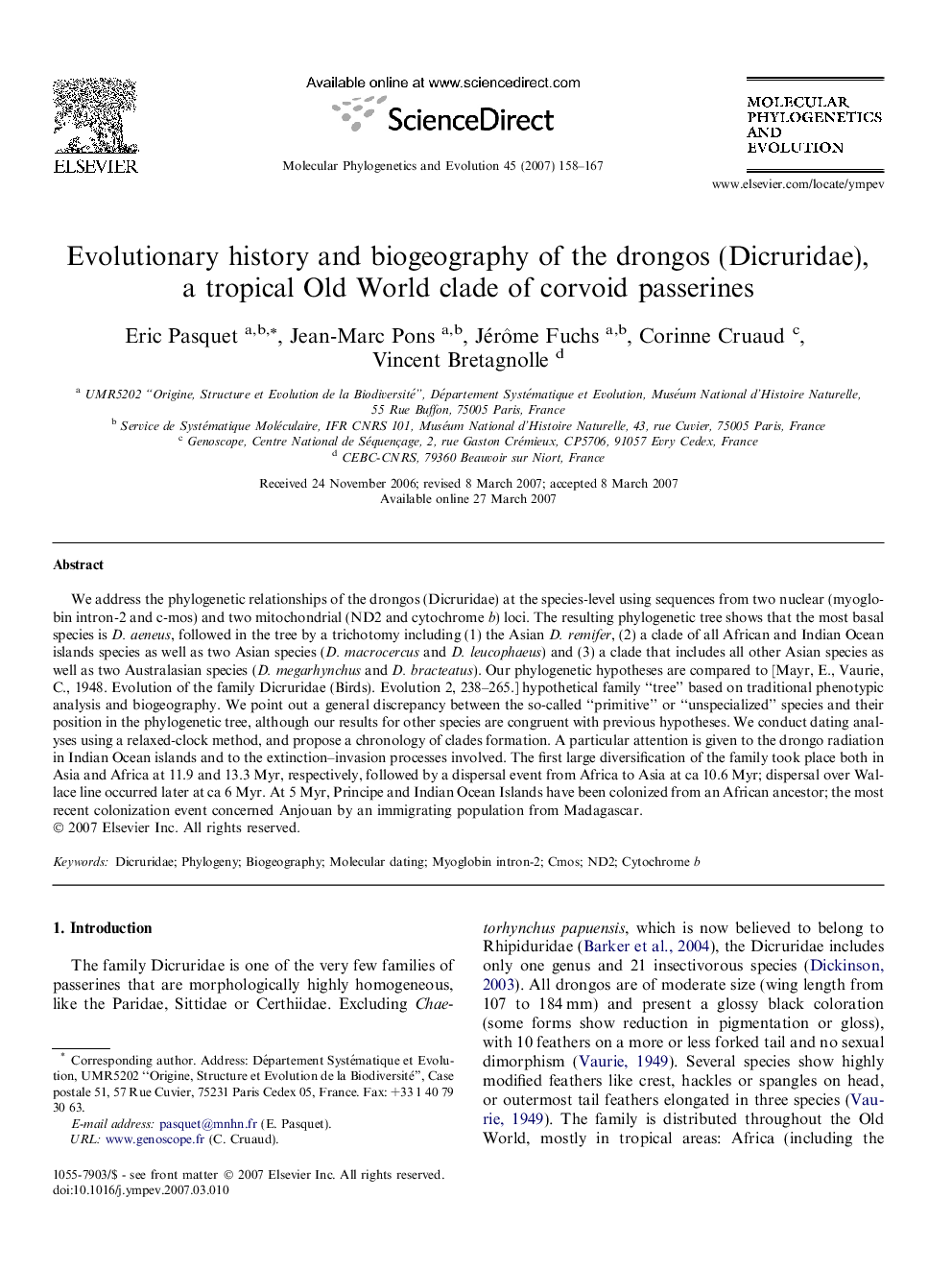| کد مقاله | کد نشریه | سال انتشار | مقاله انگلیسی | نسخه تمام متن |
|---|---|---|---|---|
| 2835778 | 1164353 | 2007 | 10 صفحه PDF | دانلود رایگان |

We address the phylogenetic relationships of the drongos (Dicruridae) at the species-level using sequences from two nuclear (myoglobin intron-2 and c-mos) and two mitochondrial (ND2 and cytochrome b) loci. The resulting phylogenetic tree shows that the most basal species is D. aeneus, followed in the tree by a trichotomy including (1) the Asian D. remifer, (2) a clade of all African and Indian Ocean islands species as well as two Asian species (D. macrocercus and D. leucophaeus) and (3) a clade that includes all other Asian species as well as two Australasian species (D. megarhynchus and D. bracteatus). Our phylogenetic hypotheses are compared to [Mayr, E., Vaurie, C., 1948. Evolution of the family Dicruridae (Birds). Evolution 2, 238–265.] hypothetical family “tree” based on traditional phenotypic analysis and biogeography. We point out a general discrepancy between the so-called “primitive” or “unspecialized” species and their position in the phylogenetic tree, although our results for other species are congruent with previous hypotheses. We conduct dating analyses using a relaxed-clock method, and propose a chronology of clades formation. A particular attention is given to the drongo radiation in Indian Ocean islands and to the extinction–invasion processes involved. The first large diversification of the family took place both in Asia and Africa at 11.9 and 13.3 Myr, respectively, followed by a dispersal event from Africa to Asia at ca 10.6 Myr; dispersal over Wallace line occurred later at ca 6 Myr. At 5 Myr, Principe and Indian Ocean Islands have been colonized from an African ancestor; the most recent colonization event concerned Anjouan by an immigrating population from Madagascar.
Journal: Molecular Phylogenetics and Evolution - Volume 45, Issue 1, October 2007, Pages 158–167